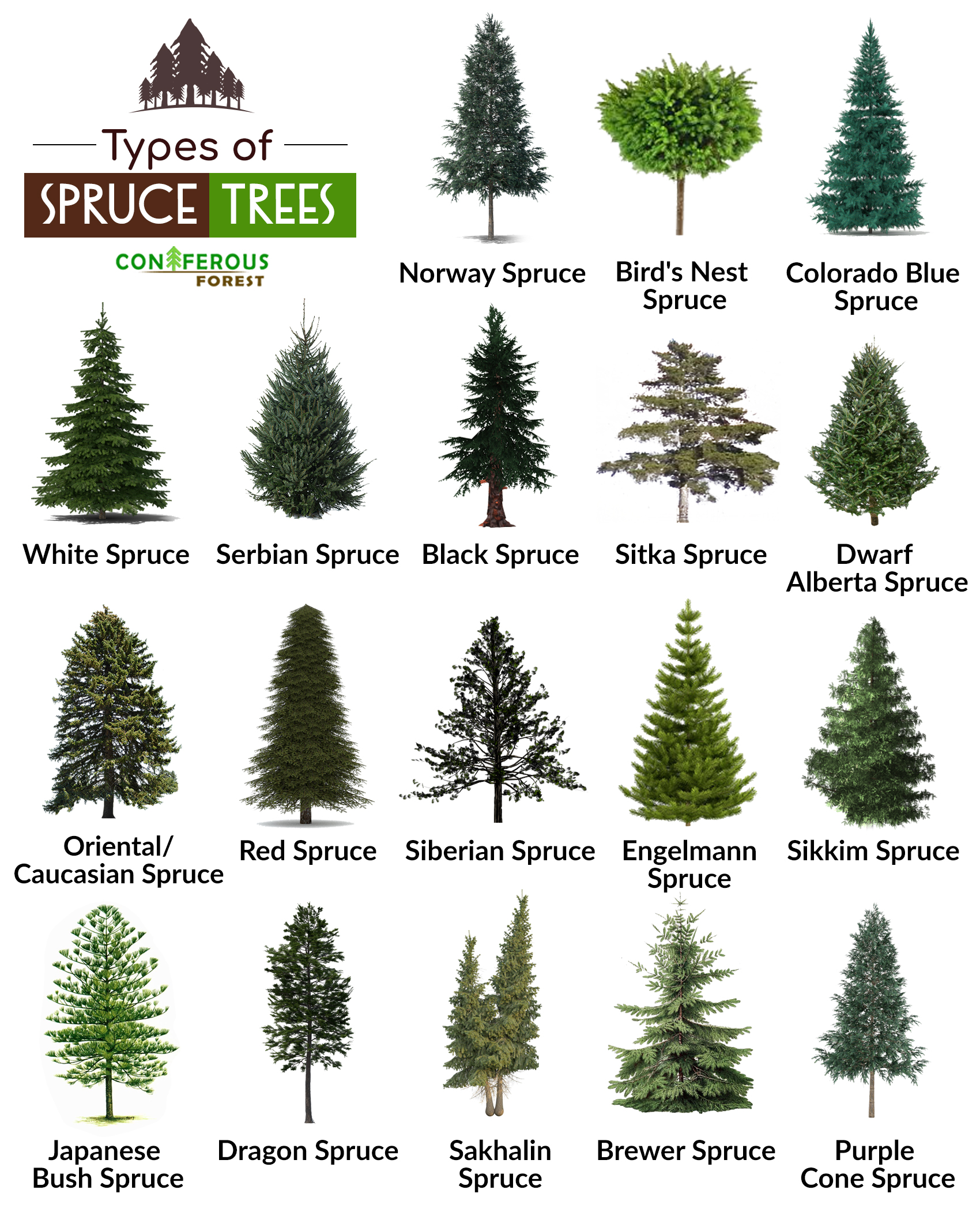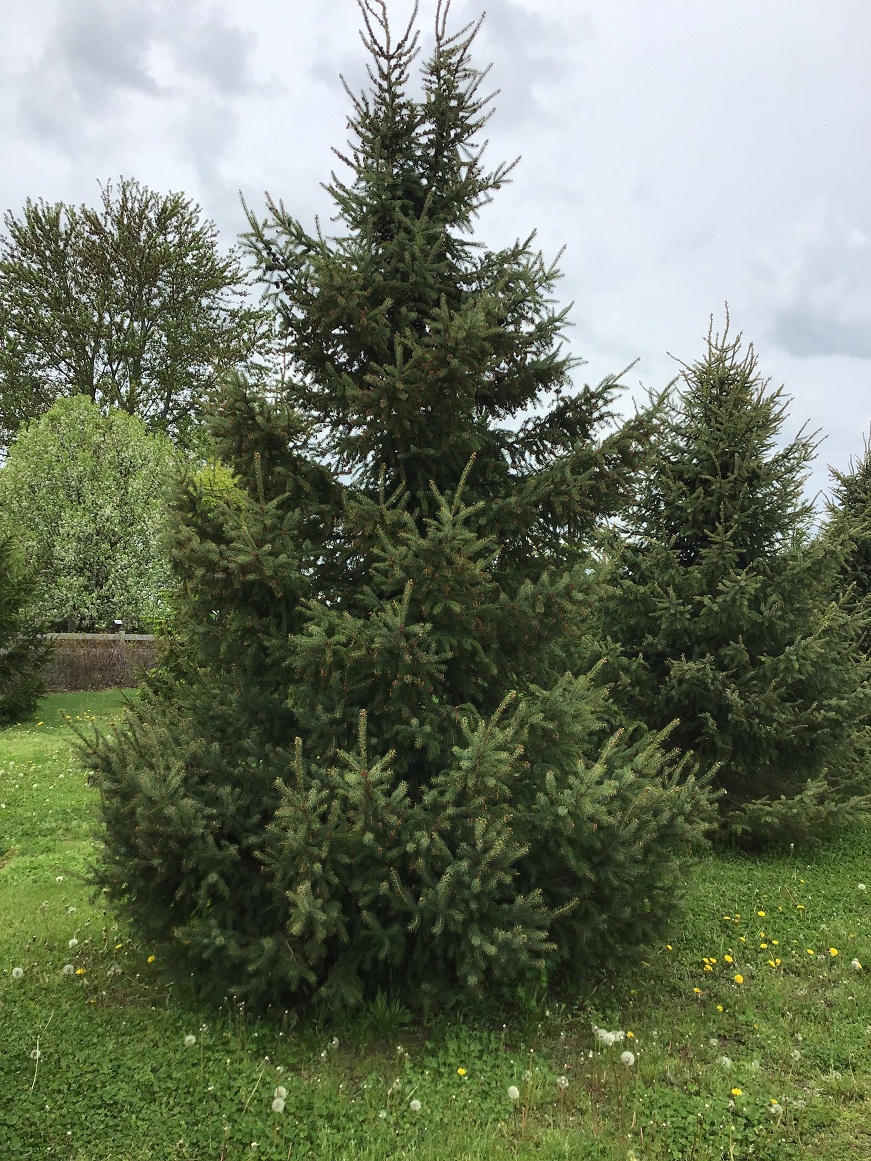Spruce
Spruce Trees: Iconic Evergreens with Distinctive Features and Ecological Value
Imagine stepping into a forest filled with towering Spruce Trees, their spire-like crowns reaching for the sky. Known for their distinctive downward-hanging cones and four-sided needles, Spruce Trees stand as one of nature’s most versatile and resilient evergreens, supporting entire ecosystems while providing humans with valuable resources.
The Spruce Tree (Picea spp.) is one of the most widely recognized conifers, found in temperate and boreal regions across the Northern Hemisphere. These evergreen trees, with their soft, four-sided needles and distinctive cones that hang downward, have been a vital part of forest ecosystems for centuries. Whether it’s the Norway Spruce, Blue Spruce, or Sitka Spruce, each species contributes to biodiversity and ecological stability. From their towering height to their role in timber production, Spruce Trees continue to play a significant role in shaping landscapes and supporting wildlife.
Spruce is any of the large, coniferous tree species belonging to the genus Picea of the family Pinaceae, distributed across the temperate and boreal regions in the Northern Hemisphere. These trees can be identified by the four-sided needles and the cones that hang downwards after pollination.
Scientific Classification | |
| Kingdom | Plantae |
| Clade | Tracheophytes |
| Division | Pinophyta |
| Class | Pinopsida |
| Order | Pinales |
| Family | Pinaceae |
| Subfamily | Piceoideae |
| Genus | Picea |
List of Different Types of Spruce Trees
The Picea genus includes thirty-five extant species, out of which the Brewer’s spruce has a basal position, after that come the Sitka spruce, and then the other species. All these species are classified into three clades, as given below.
Clade I
- Brewer’s spruce (Picea breweriana)
- Sitka spruce (Picea sitchensis)
- Engelmann spruce (Picea engelmannii)
- White spruce (Picea glauca)
Clade II
- Sargent’s spruce (Picea brachytyla)
- Chihuahua spruce (Picea chihuahuana)
- Burmese spruce (Picea farreri)
- Likiang spruce (Picea likiangensis)
- Martinez spruce (Picea martinezii)
- Maximowicz spruce (Picea maximowiczii)
- Taiwan spruce (Picea morrisonicola)
- Veitch’s spruce (Picea neoveitchii)
- Caucasian or Oriental spruce (Picea orientalis)
- Purple cone spruce (Picea purpurea)
- Schrenk’s spruce (Picea schrenkiana)
- Morinda spruce (Picea smithiana)
- Sikkim spruce (Picea spinulosa)
- Tiger-tail spruce (Picea torano)
- Wilson’s spruce (Picea wilsonii)
Clade III
- Norway spruce (Picea abies)
- Alcock’s spruce (Picea alcoquiana)
- Dragon spruce (Picea asperata)
- Qinghai spruce (Picea crassifolia)
- Glehn’s spruce (Picea glehnii)
- Jezo spruce (Picea jezoensis)
- Korean spruce (Picea koraiensis)
- Koyama’s spruce (Picea koyamae)
- Black spruce (Picea mariana)
- Meyer’s spruce (Picea meyeri)
- Siberian spruce (Picea obovata)
- Serbian spruce (Picea omorika)
- Colorado spruce or blue spruce (Picea pungens)
- Green dragon spruce (Picea retroflexa)
- Red spruce (Picea rubens)
In addition to these spruce species, several cultivars exist including ‘Dwarf Alberta Spruce’, ‘Black Hills Spruce’, ‘Coerulea’, ‘Echiniformis’, ‘Jean’s Dilly’, ‘Pendula’, ‘Pixie’, and ‘Rainbow’s End’.
Quick Information | |
| Tree Type | Evergreen coniferous |
| Identification | Height: 60-200 ft Leaves: Linear, spirally-arranged, needle-like, about 1 inch long Trunk Diameter: 0.5-2 ft Bark: Thin, scaly, gray to reddish-brown Female Cones: Drooping, ovoid or cylindrical, green to purple when young, pale to dark brown when matured Seeds: Winged, with 5-10 cotyledons Branches: Whorled Crown: Conical to spirelike Pollen cones: Single/grouped, oblong, auxiliary, yellow to purple |
| Distribution | Western and Northern North America, Mexico, Europe, Asia |
| Habitat | Mountainous regions, boreal forests |
| USDA Hardiness Zone | 2-8 |
| Growth Rate | Fast, 30-60 inches annually |
| Lifespan | Long-lived, varies depending on the species, some can live for 1000 years |
| Growing Conditions | Sunlight: Prefers full sun, but also tolerates shade Soil: Loam, sandy, clay, well-drained Water: 1-3 inches every week when rainfall is low |
| Drought Tolerance | Moderate |
| Diseases & Pests | Shoot blight, needle cast, and stem canker caused by the fungi Sirococcus, Rhizosphaera kalkhoffi, and Valsa kunzei respectively, eastern spruce budworm is a pest of white and black spruce |
| Reproductive System | Monoecious |
| Propagation | From stem cuttings |
| Wildlife Value | Deer mice, mountain voles, chipmunks, and red-backed vole eat spruce seeds, red squirrels feed on its flower buds |
| Uses | As pulpwood for making paper, building wood, tonewood for mandolins, guitars, violins, pianos, and cellos, ornamental Christmas trees; shoots are the source of vitamin C, for making spruce beer from branches and leaves |
| IUCN Conservation Status | Species like Norway spruce, blue spruce, and white spruce are listed as Least Concern, while Serbian spruce is considered Endangered |
Interesting Facts
- The spruce tree is symbolically used in the coat-of-arms of the Finnish town of Kuhmo.
- Spruce needles fall off when the tree is 4-10 years old. However, the peg-like structures (called sterigmata or pulvini) on the branches are retained, making them rough.
- The Wright brothers constructed the first aircraft, called Wright Flyer, using spruce wood.
- Captain Cook prepared an alcoholic sugar-based beer from branches, needles, and buds of spruce trees during his voyages and gave it to his crew for preventing scurvy.
- A Norway spruce named Old Tjikko is the oldest clonal tree, having an age of 9,550 years.
Conclusion
The Spruce Tree is more than just an iconic evergreen—it’s a key player in forest ecosystems. Its role in providing habitat for wildlife, purifying air and water, and stabilizing soil cannot be overstated. Spruce Trees are a source of timber, pulp, and even medicinal compounds, while their wood has been used in building, crafting musical instruments, and producing paper. Despite their resilience, Spruce Trees face growing threats from climate change and pests like the Eastern Spruce Budworm. By understanding the importance of these evergreens and supporting conservation efforts, we can help ensure that Spruce Trees continue to thrive in forests around the world.
References
- https://oregonstate.edu/trees/ conifer_genera/spruce.html
- https://www.conifers.org/ pi/Picea.php
- http://biorefinery.utk.edu/ technical_reviews/Tree%20Size.pdf
- http://hort.uconn.edu/ detail.php?pid=310
- https://web.archive.org/web/ 20040405082131/http:// www.nasm.si.edu/ exhibitions/gal100/wright1903.html




